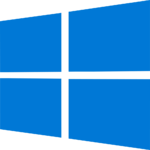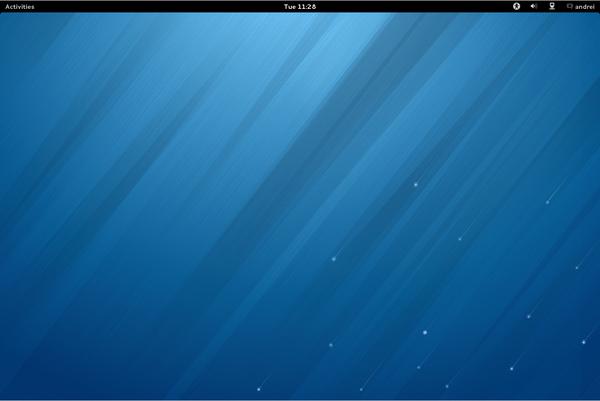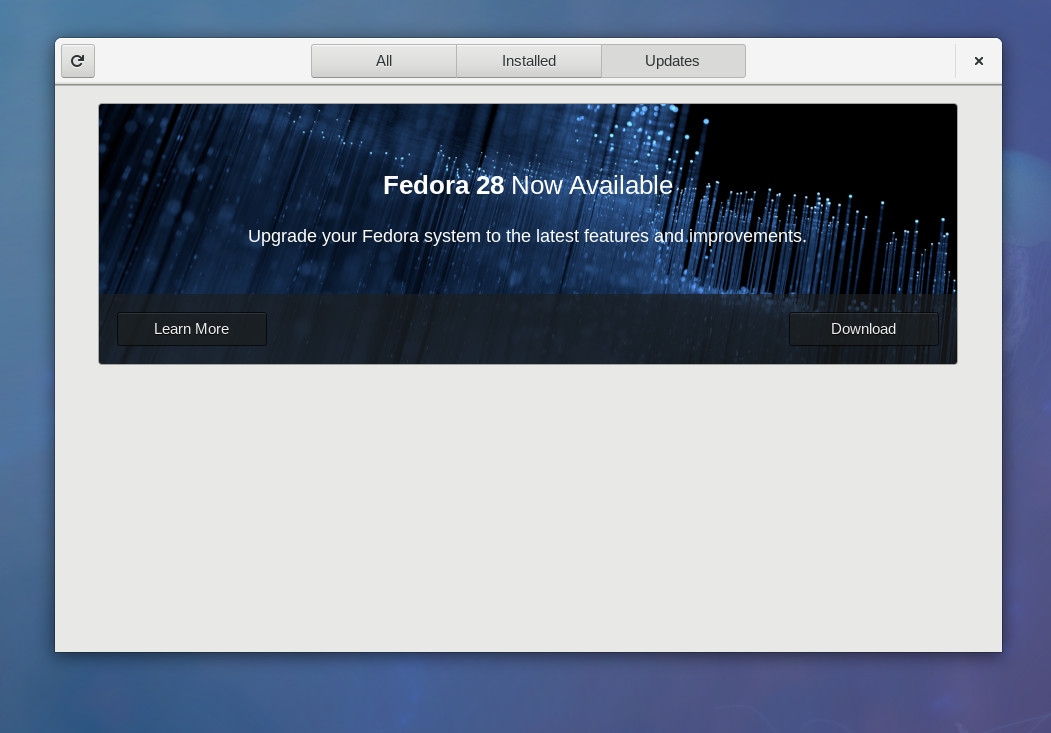Fedora Linux 64 Bit Iso Download
GNOME is available to install through most GNU/Linux distributions. Many offer the chance to try a demo before you install. Fedora provides GNOME straight out of the box – just install or try it live. Fedora Workstation 33 is now available and ships GNOME 3.38. GNOME can be selected when installing the latest version of. Download Download a Silverblue image. Silverblue images for Fedora 33 are provided by the Fedora Project. X8664 2.7GB Silverblue image (Fedora 33) aarch64 2.1GB Silverblue image (Fedora 33) ppc64le 2.1GB Silverblue image (Fedora 33) Fedora provides the Media Writer as a convenient way to create bootable USB drives. It's OK to download 64 bit version commonly. But if your computer is old and not supported 64 bit computing, download 32 bit version. ⇒. The example on this site uses 64 bit version of Fedora 17.
- Fedora Linux 64 Bit Iso Download Iso
- Fedora Linux 64 Bit Iso Download Torrent
- Linux Fedora 29 Download 64 Bit Iso
- Fedora Linux 64 Bit Iso Downloader Free Download
Fedora (formerly Fedora Core) is a Linux distribution developed by the community-supported Fedora Project and owned by Red Hat. Fedora contains software distributed under a free and open-source license and aims to be on the leading edge of such technologies.
Mauriat Miranda (https://www.mjmwired.net/contact/)
Other Guides/Resources
Published: 4 October 2006 (updated: 16 June 2009)
NOTE: The content of this page may be outdated.Links may not be valid and the steps detailed may no longer work.This page is saved for archival purposes only.
Fedora Linux
What is Fedora? Fedora is a Linux distribution. What is a Linux distribution?It is a collection of software that forms a complete operating system. For moreinformation please search on google or read on the Fedora Project Page.
This page is not intended to explain what Fedora or Linux is, if you know you wish touse Fedora and wish to install it on your desktop or laptop, then this page ismeant to help you download Fedora. Installation instructions are separate.
At the time of writing this, Fedora is currently at version 11. Prior to Fedora 7,Fedora was known as Fedora Core (often known as FC).
This page is meant for primarily for Windows users but applies to all users.
Installation Media
Fedora is available for download through 'images' of CD's or DVD's. These imagesare of file type .ISO and contain a complete copy of a CD or DVDwhich when written to a CD or DVD provide bootable software to run and install Fedora.Often the terms 'ISO' and 'image' mean the same thing with respect to Linux installations.
The images are categorized into either 'Install Media' or 'Live Media'.Each is different.
Install Media
The images grouped in the Install Media are typically DVD's. They containa bootable installer and a complete set of all major applications which come standardin Linux. For this reason, it is recommended to use a DVD installation media forinstalling Fedora.
Note: While Fedora does currently provide the same content in the DVD in a setof 6-7 CD's, this may be discontinued in the future.
Live Media

The images grouped in the Live Media are typically CD's (although some are DVD's).They contain a reduced set of applications and do NOT boot directly to an installer. Insteadthe load a live working copy of Fedora into memory (not affecting your hard drive) where youcan you test and use Fedora before actually installing it. If you wish you CAN install from aLive Media however there are several fewer options within the installer.
The Live Media are typically grouped by a specific function. The primary two optionsare Fedora Desktop Live Media and Fedora KDE Live Media. The 'Desktop' isbased on the GNOME Desktop Environment (#) which is the official desktopin Fedora. However many new users find the KDE Desktop Environment (#) easierto use. If you prefer to use a Live Media, it is recommended to try the KDE option.
Note: There are other customized Live Media for specific purposes. These customversions are known as 'SPINS'. The images for Spins are available on the Spins Page(#). However Spins are typically only provided fordownload as torrents.
Major Differences
The standard DVD Install Media provides more options for installation, such as atext based installer if you have older hardware. The Live Media require more memorysince they run directly in memory with graphics. Additionally, since the Live Mediahave less software, you will be required to download significantly more applications to havea useful Fedora installation. However the Live Media maybe good to demonstrate Fedora functionalitywithout having to install it.
Hardware Architecture: 32bit? 64bit?
Fedora must be installed matching the architecture of your machine. Thereare 3 architectures officially supported on the Fedora Download page:
- i386/i686 (32-bit)
This generally applies to almost all Intel Pentium or AMD processor. - x86_64 (64-bit)
If you are using an AMD 64, Opteron, AMD X2 processor or Intel 64bit (DuoCore) then bothx86_64 and i386 will work for you. (Almost all new processors) - PPC
This is only for Power PC users. These are older Mac's which donot have Intel processors.
Note: If you have a 64bit system, you can optionally run 32bit. Almost alldesktop and laptop hardware within the past 1-2 years will support 64-bit. However somenetbook or 'mini-laptops' may still be 32-bit.
Selecting between 32-bit and 64-bit
Most all x86 based 64-bit CPU's will also run 32-bit. However by running 32-bit Linuxon 64-bit hardware you will sacrifice some performance and features of newer hardware.There are no major barriers to running 64-bit Linux.
Unless you have older hardware, or you specifically need i386 32-bit,you should use 64-bit. This applies to both desktop and server uses.
Download Space and Time
Currently you will require about 4GB for DVD Install Media or about 700-800MBfor CD/DVD Live Media. The 64-bit downloads will typically be larger than the32-bit downloads.
Depending on your connection speed and type of internet service.Download times will vary. Users who do NOT have broadband (cable, dsl,t1) should consider purchasing CD's from an online vendor. The costwill typically be between $5-$15.
Some online vendors:
http://fedoraproject.org/wiki/Distribution/OnlineVendors
Remember that complete installations will typically require a separate 4-5GBof space (if DVD Install) or about 1-2GB (if Live Install).

Download Method
You current options to download images are either by standard FTP or usingbittorrent. The FTP method is manually downloading each CD or DVD image fileindividually. Bittorrent download is a peer-to-peer file sharing method.
Fedora Linux 64 Bit Iso Download Iso
Fedora works with other sites (universities, organizations, etc.) to provideexact copies of the ISO images. These site are known as 'mirrors'. Many usersmight find fast downloads from a mirror that is located nearby. If yourinternet provider limits torrents in some way, then this method may be your bestoption. However these files must be verified for integrity before usage.
The recommended method for downloading is using the torrent. By engaging in apeer-to-peer session, you will help others download also. Additionally your fileswill be automatically checked for integrity and you can pause and resume thedownload without any problems. Some specific versions of Fedora ('SPINS') may onlybe available through torrents, as they may not be on FTP mirrors.
Manual FTP Download
To download manually go to:
http://mirrors.fedoraproject.org/publiclist
Every mirror will have a similar directory structure, typically startingwith 'releases/'. Under the 'releases/' there will be a number matching the release.Ex: 9, 10, 11 etc. There will usually only 2-3 different numbers. Each one is a uniqueFedora version. NOTE: If you don't see 'releases/' and/or older numbers, then mostlikely that mirror is not up to date and you should try a different mirror.
Once you select the Fedora version, you will typically see some directoryoptions: 'Everything/', 'Fedora/', and 'Live/'. The 'Fedora/' and 'Live/' directorystypically have ISO images in some subdirectory. Selecting either optionshould next list the architectures available at thatmirror: i386, ppc and x86_64. The source is the source code.Select your choice as noted above (architecture).
Once you selected your architecture, go to the iso directory and download yourfiles. If you instead chose 'Live/' you should see the ISO images immediately.
NOTE: Make sure you copy the SHA1SUM or CHECKSUM file from that mirror, you willneed it verify integrity of your download.
Note: If the iso directory is empty you will have to use anothermirror site.
Bittorrent Download
Bittorrent is a peer-to-peer method of downloading software.
To install Bittorrent in windows go to:http://www.bittorrent.com/download.html
To obtain the torrent file for bittorrent, go to: http://torrent.fedoraproject.org/.
Make sure to select the correct media and architecture.
Note: Additionally torrents may be available on the Fedora 'SPINS' page (#).
Note: Other peer-to-peer applications may support loading .torrentfiles. Use whichever application you prefer.
Verify Integrity
Once you have the ISO files, DO NOT decompress them. If you did NOT usebittorrent, make sure you check their integrity before burning them.To verify their integrity make sure to download the SHA1SUM or CHECKSUM file text fileincluded with the ISO files.
Fedora 10 and older used sha1sum, while Fedora 11 and newer use sha256sum.
Run 'sha1sum' (or 'sha256sum') on each ISO and compare with the values in the file.
The version of these applications for windows can be found here:
ftp://ftp.gnupg.org/gcrypt/binary/sha1sum.exe
http://www.slavasoft.com/fsum/
http://www.slavasoft.com/hashcalc/
http://blog.nfllab.com/archives/152-Win32-native-md5sum,-sha1sum,-sha256sum-etc..html
If it fails to match you MUST RE-DOWNLOAD the ISO file.
Fedora Linux 64 Bit Iso Download Torrent
Writing Image to CD/DVD Physical Media
Linux Fedora 29 Download 64 Bit Iso
You must use a CD writer or DVD writer to create the installation disc.
Do not simply 'copy' the ISO image to a disc. Every major application supportsan option to 'Burn an Image'. Nero, Roxio, Sony and even Windows XP/Vista cancreate a CD/DVD from an ISO image.
Booting the Installation Disc
The most common and easiest method for installation is booting via a CD-ROMor DVD-ROM drive. Most new computers support booting from CD/DVD. Your computer musthave this option to install Fedora. Insert the first CD (or DVD) andreboot your computer, if the disc does not boot, then go to yourcomputer BIOS options and set the bootable device to your CD/DVD ROMdrive.
Proceed to installation!!!
Installing Fedora 11,Installing Fedora 10
NOTE: If you do not have a CD/DVD drive other options are available (suchas via Flash-Drive, USB Drive, etc.) however they are not mentioned in this document.
More Information

Comments, suggestions, questions or any feedback welcome for this page or any of my Resources. Please use the contact link.
Help Out: If you found this guide or any Resource helpful, please consider supporting this site by recommending this page to others or linking to this page. I appreciate all the support I receive. Thank you in advance.
- If you wish to thank me via Amazon.com wishlist.
Disclaimer: The author makes no claim to the accuracy of the information provided. This information is provided in the hope that it will be useful, but WITHOUT ANY WARRANTY. There is no implied support from referencing this guide. Any help that is provided is at will. Use this information at your own risk. Always make proper backups and use caution when modifying critical system files.
PLEASE DO NOT mirror, translate or duplicate this page without contacting me.
Fedora Linux 64 Bit Iso Downloader Free Download
Copyright © 2003-2013 by Mauriat Miranda (mjmwired.net).